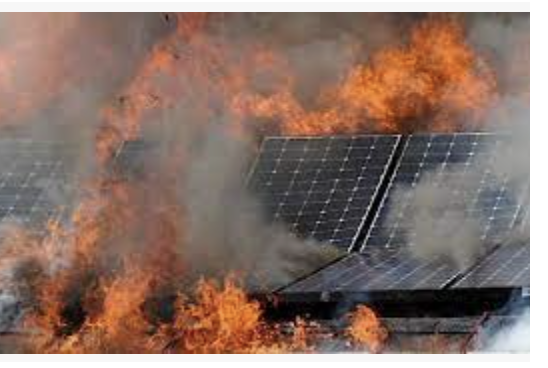The intricacies are beyond me, but apparently California has discovered that there's no free solar lunch
/Damn, and they were selling like a house on fire
California plans to kill the solar industry
To the limited extent I understand this, California, like many other states, has forced utilities to buy at exactly the time they don’t need it, the surplus electricity generated by home solar units, at a very high cost — in California’s case — 25¢ per kWh. If the utilities actually did need additional energy, they could buy it from other industrial providers for 5¢ per kWh or so. The difference: 20¢ — has to come out of someone’s pocket, and despite the most fervent dreams of the unicorn crowd, that “someone” is them.
Naturally, people who have bought solar systems aren’t happy. I’ve excerpted below a lengthy screed from one such angry customer, posted on the normally conservative Hot Air site, which just shows that conservative or liberal, no one likes relinquishing subsidies paid by somebody else.
Hot Air;
Several things you need to know about California’s electricity grid and current solar incentives. First of all, California (at least southern California where I live) doesn’t charge one flat rate for electricity. Instead, my electricity provider, Southern California Edison (SCE), has what are called Time of Use rate plans. There are actually three different plans you can enroll in (plus discontinued rate plans that some customers still have) and all of those plans vary between summer and winter. But the general idea is that late and night and for most of the day power is at one price (29 or 30 cents per kilowatthour) (which is twice the national average of 14¢, btw — oh, California! Ed] and during the peak hours of 4-9 pm the price spikes (to between 41 and 59 cents per kilowatt hour) depending on the exact plan you have.
The billing gets way more complicated than that, unfortunately, because the provider also charges you based on tiers of total usage for the month. So if you use a small amount of power you get charged at lower tier one rates but once you pass a certain number of kilowatt hours you flip into tier 2 where all the rates go up and so on until you get to tier 3 where the cost of your power really hits the stratosphere.
[Ed}: Here’s where the free lunch receives its emetic:
That’s how the system works for most customers. But California also offers some big incentives to install solar power. The system is called “Net Metering.” Basically, the idea here is that if you generate more power than you use, your provider is required to buy that excess power back from you. So on a sunny day, my system might be generating 6 kilowatt hours around noon but my house is probably only using about 1 of those six kilowatt hours to run a few lights and maybe a couple of computers. So that excess goes back onto the grid and my electricty meter effectively spins backwards. The credit I get from SCE for all of the excess power during the day gets deducted from whatever power I used at night when my solar system isn’t generating.
That’s basically why I bought solar. I won’t go into all the numbers but under the current net metering system I paid for the physical system (panels, inverter, installation) up front and then have an annual electricity bill around $150, which is less than I was previously paying per month. So over the course of roughly 10 years, the monthly savings equal the up front cost of the system. After that break even point, all of the energy I generate for the next 10-15 years is effectively free. Given the cost of electricity in California, that could mean saving $10,000 to $15,000.
At least, that was the deal. Enter the California Public Utilities Commission which has apparently decided it’s time to alter the deal. This new plan called Net Metering 3.0 hasn’t been passed yet but is expected to be voted on next month. If it does pass, the state will start charging new solar installations a fee based on the size of their system. The fee is $8 per month for every kW of generating equipment you have installed on the roof. So if you have an 8kW system, you’ll owe SCE an additional $64 per month or over $700 per year. You don’t get anything for that money, it’s basically just a tax on everyone who installs solar equipment.
In addition, the new plan will reduce the amount the power company pays you for your excess energy from about 25 cents per kilowatt hour (still less than what the power company charges you for a kilowatt hour of power) down to about 6 cents per kWh. And that means there’s no way to break even on your bill anymore unless you also install an expensive battery system to save the excess energy for your own use. Of course the battery costs almost as much as the entire system. .…
Why is this happening? Because California wants more money. According to the California Public Utilities Commission so many people have installed solar to get out of paying their montly electric bill that utilities can’t cover the cost of maintaining the distribution system, i.e. the power lines that keep setting parts of the state on fire. Increasingly, the cost of maintaining those lines is falling on people who can’t afford to install solar who tend to be lower income people. And that’s unfair according to the PUC and California won’t allow that. So they’re creating a new tax on those who can afford to pay it.
…. Meanwhile, California just shut down its last nuclear power plant about 30 miles south of my house, a plant that could have provided power for many more years. Shuttering nuclear plants in the midst of a power crisis makes no sense as even Vox admitted a couple months ago.
The result of Net Metering 3.0 is likely going to be the end of the residential solar industry in California. I have a neighbor who was interested in possibly getting a system after I had mine installed. Like me, he figured that after 10 years he’d break even on the cost and still get years of free power. But under the new system his break even point would be 18 years or more so now he doesn’t see the point. A lot of other people are going to run the numbers and reach the same conclusion. Solar installers are about to see their orders drop off a cliff which doesn’t make much sense if the goal was to shift people to green energy. Earlier this week, Elon Musk (who owns one of the major solar installers) called the new plan “insane.”
If you’re interested, here’s a new story told from the view of the bereaved;


